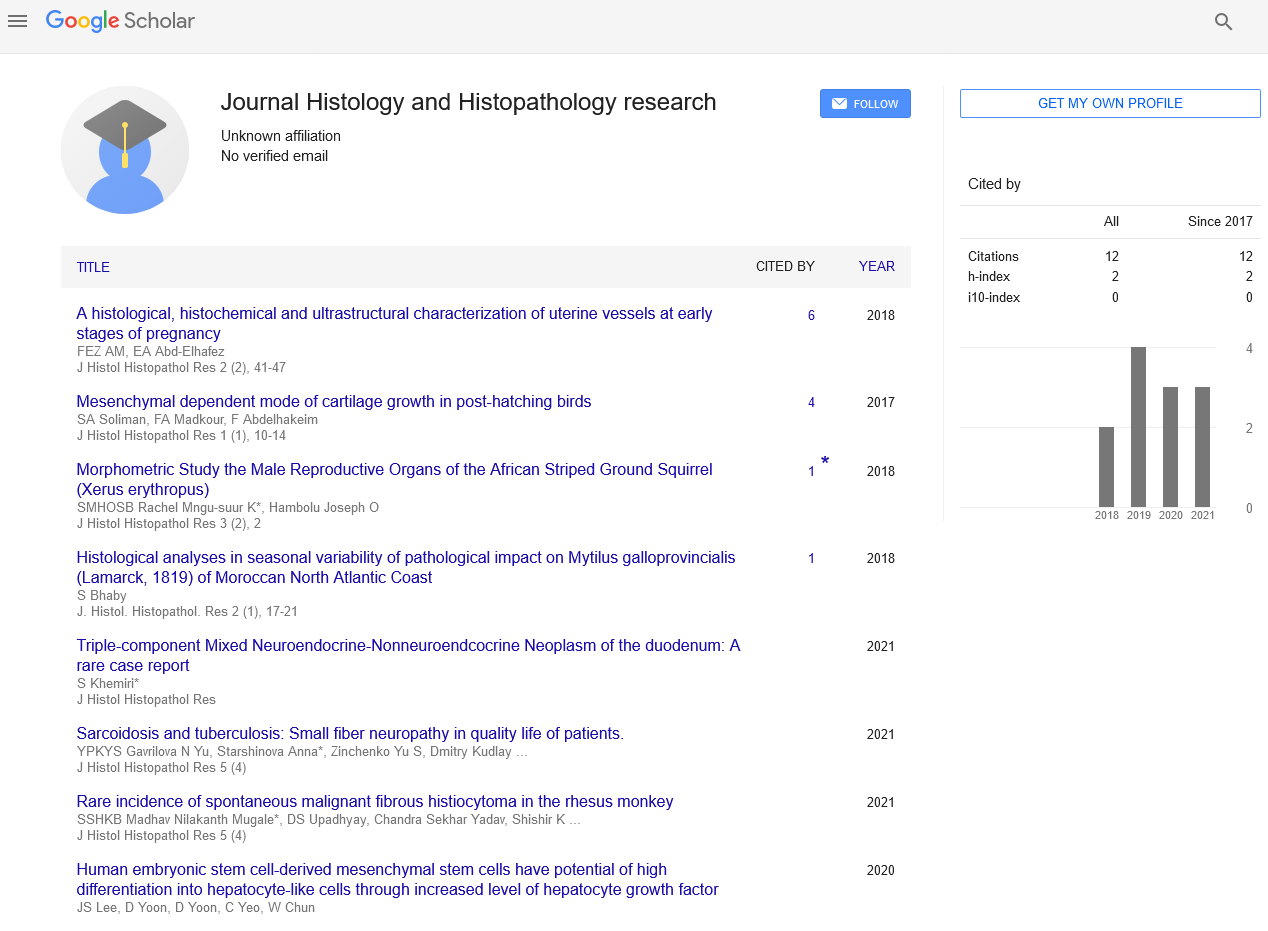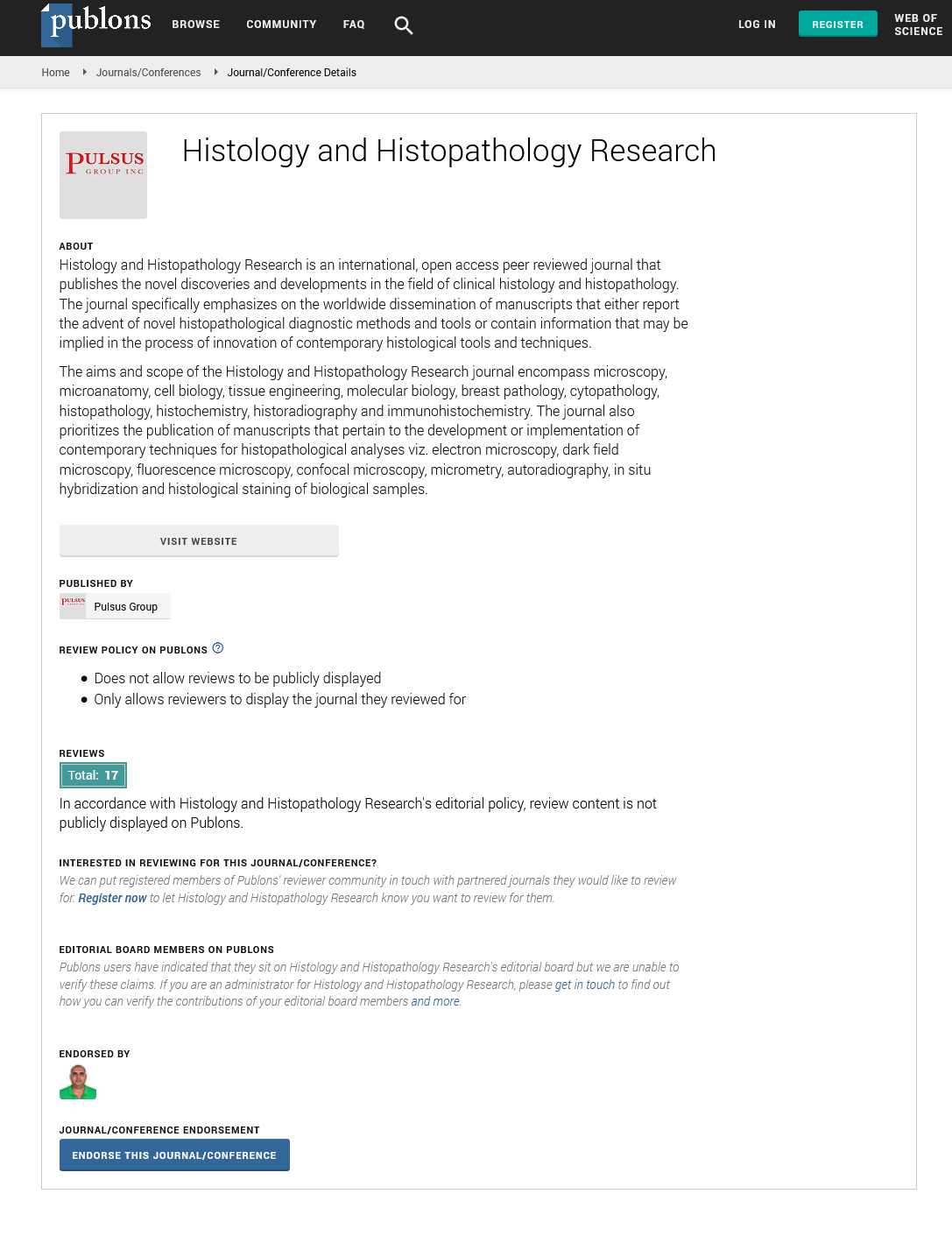A brief note on trabeculated bone tissue
Received: 19-Oct-2021 Accepted Date: Nov 02, 2021; Published: 09-Nov-2021
Citation: Jensen S. A brief note on trabeculated bone tissue. J Histol Histopathol Res 2021;5(4):1.
This open-access article is distributed under the terms of the Creative Commons Attribution Non-Commercial License (CC BY-NC) (http://creativecommons.org/licenses/by-nc/4.0/), which permits reuse, distribution and reproduction of the article, provided that the original work is properly cited and the reuse is restricted to noncommercial purposes. For commercial reuse, contact reprints@pulsus.com
Editorial Note
A trabecula is a small, often microscopic, tissue element in the form of a small beam, strut or rod, generally having a mechanical function, and usually but not necessarily composed of dense collagenous tissue. Other materials, like as muscle and bone, can be used to create them. Muscles form trabeculae carneae and septomarginal trabeculae in the heart. Cancellous bone is made up of trabeculated bone tissue that has been joined collectively.
Trabeculae of a cancellous bone can approximate septa in cross sections, but they are topologically distinct in three dimensions, with trabeculae being roughly rod or pillar-shaped and septa being sheet-like. Trabeculae may resist pressure (as in the penis, see for example trabeculae of corpora cavernosa and trabeculae of corpus spongiosum) or provide a cell filter when crossing fluid-filled spaces (as in the trabecular meshwork of the eye). As the walls of some pulmonary alveoli in emphysema, multiple perforations in a septum may reduce it to a collection of trabeculae.
It can be found near the ends of long bones like the femur, where the bone is composed of holes connected by thin rods and plates of bone tissue instead of being solid. The space between the trabecular pores is occupied with red bone marrow, which generates all of the blood cells. Despite the fact that trabecular bone has a large number of holes, its spatial complexity helps to the most strength with the least amount of bulk. The external shape and internal architecture of bone are determined by the external stresses operating on it, according to Wolff's Law, which was proposed in 1892. Finally, to resist external loading, the bone structure expands and involved in the production.
Understanding the stress-related and adaptive activities of trabecular bone has become a large emphasis for bone physiologists due to the growing number of total joint replacements and their impact on bone healing. It's crucial to study the mechanical properties of trabecular bone as a function of variables such anatomic site, density, and age in order to understand the role of trabecular. Mechanical factors including such modulus, uniaxial strength, and fatigue properties must be analyzed in order to do so.
Trabecular bone typically does have a porosity of 75–95 percent and a density of 0.2 to 0.8 g/cm3. The porosity of the bone can reduce its strength but also reducing its weight. The porosity of a material, and how it is structured, has an effect on its strength. As a result, the microstructure of trabecular bone is typically oriented, with the "grain" of porosity aligned in the direction of greatest mechanical stiffness and strength. Trabecular bone's mechanical properties are significantly an-isotropic due to its microstructural directionality. Young's modulus for trabecular bone varies from 800 to 14,000 MPa, with failure strength of 1 to 100 MPa.
Studies have shown that after a person reaches adulthood, bone density decreases steadily with age, with trabecular bone mass loss being a contributing factor. The World Health Organization describes osteopenia as a loss of bone mass that is one standard deviation below mean BMD in young adults, and osteoporosis as a loss of bone mass that is more than 2.5 standard deviations below the mean.
Stress fractures, which can occur without warning in those at risk, are greatly increased by low bone density. The upper femur, which contains 25-50 percent trabecular bone depending on the area, the vertebrae, which are about 90 percent trabecular, and the wrist are the most common sites for decreased bone low-impact fractures. When the volume in trabecular bone decreases, the original plate-and-rod structure is disturbed; plate-like structures becomes rod-like structures, and pre-existing rod-like structures thin until they disconnect and resorb into the body. Changes in trabecular bone are often gender-specific, with the most significant differences in bone mass and trabecular microstructure occurring during the menopause period.






